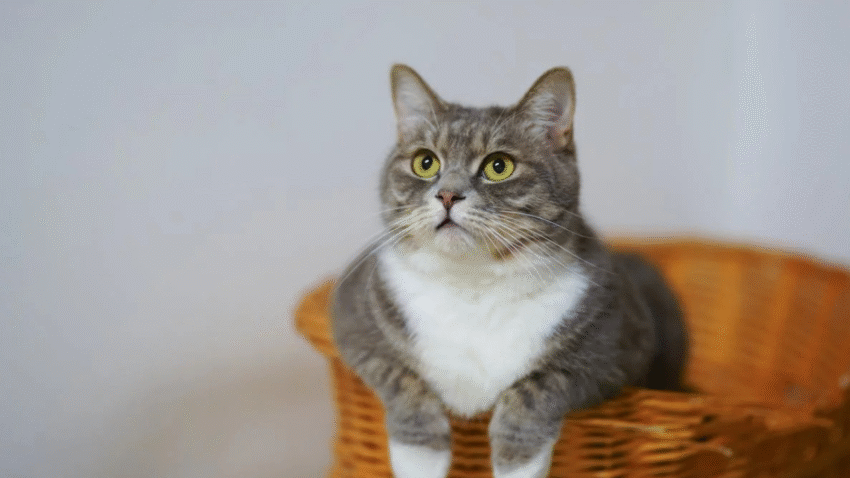Introduction
Thinking about changing your cat’s food? Whether it’s to upgrade their diet, address health concerns, or move to a different life stage formula, making the switch too fast can lead to upset stomach, diarrhea, or refusal to eat. The key is to transition slowly and thoughtfully. In this guide, you’ll learn how to switch your cat’s food safely without stomach issues—step by step. We’ll also cover common mistakes and extra tips to make the process smooth and stress-free.
Why Cats Need a Gradual Food Transition
Cats have sensitive digestive systems, and sudden changes in diet can cause:
- Vomiting
- Loose stools or diarrhea
- Decreased appetite
- Stress-related behavior changes
Even healthy cats may experience digestive upset if new food is introduced too quickly. A slow and steady transition allows your cat’s gut to adapt to new ingredients, textures, and nutrient profiles.
Step-by-Step Guide to Switching Cat Food Safely
Step 1: Choose the Right New Food
- Make sure the new food is appropriate for your cat’s age, breed, and health status.
- Read the ingredient list and nutrition panel—look for real meat, taurine, and minimal fillers.
- Avoid artificial colors or preservatives.
If switching due to a medical issue, consult your vet to choose the right prescription or specialized formula.
Step 2: Plan for a 7 to 10 Day Transition
Here’s the standard schedule for a safe transition:
- Day 1–2: 75% old food + 25% new food
- Day 3–4: 50% old food + 50% new food
- Day 5–6: 25% old food + 75% new food
- Day 7+: 100% new food
Watch your cat closely during this period for any signs of stomach upset.
Step 3: Mix Each Meal Thoroughly
- Blend the old and new food completely in the same bowl so your cat can’t eat around the new bits.
- Use warm water to enhance aroma if your cat is hesitant.
- Stick to your regular feeding schedule.
Cats are creatures of habit—maintaining consistency helps reduce stress.
Step 4: Monitor Your Cat’s Response
Watch for:
- Stool quality: It may be slightly softer during the switch, but should never be watery or frequent.
- Appetite: A brief hesitation is normal, but complete refusal may signal the need to slow down.
- Energy level: Your cat should remain alert, playful, and active.
If symptoms last more than 2 days, pause the transition and consult your vet.
Step 5: Slow Down If Needed
Some cats—especially seniors or those with sensitive stomachs—may need 10 to 14 days for a full transition. Extend each phase of the mix to 3–4 days instead of 2.
If your cat shows any digestive issues, revert to the last successful ratio, wait a couple of days, and then resume transitioning slowly.
Common Mistakes to Avoid
- Switching overnight
This is the #1 cause of stomach upset in cats. Always transition gradually unless instructed otherwise by your vet. - Feeding a food that doesn’t match life stage or needs
Kittens, adults, and seniors all have different nutritional requirements. - Ignoring food refusals
Don’t force a new food if your cat clearly dislikes it—try a different brand or flavor with similar nutrients. - Feeding too many treats during the switch
Too many extras can throw off digestion and confuse your cat’s taste preferences. - Not consulting a vet for special diets
If your cat has diabetes, kidney disease, or allergies, never change food without medical advice.
Extra Tips & Recommendations
- Use feeding puzzles or toys
If your cat is picky, using a puzzle feeder can make mealtime more fun and encourage them to try the new food. - Enhance flavor naturally
Add a small amount of warm water or unsalted bone broth (no onions or garlic) to the food to boost aroma. - Stick with similar textures
If your cat is used to dry food, switching to canned food may take longer. Mix both formats or slowly increase wet food portions. - Feed smaller, more frequent meals during transition
Smaller portions are easier on the stomach and reduce the chance of vomiting or bloat. - Be patient
Cats may take time to adjust, but slow consistency pays off with better health and easier transitions in the future.
Conclusion
Switching your cat’s food safely isn’t complicated—it just takes a bit of planning, patience, and close observation. By transitioning gradually over 7 to 10 days, monitoring their response, and avoiding common mistakes, you can help your cat adjust without any stomach issues. Whether you’re upgrading their food or managing a health concern, a careful switch is the kindest and healthiest approach.
🐾 For more step-by-step cat care tips, stick around and explore our full collection of guides!
